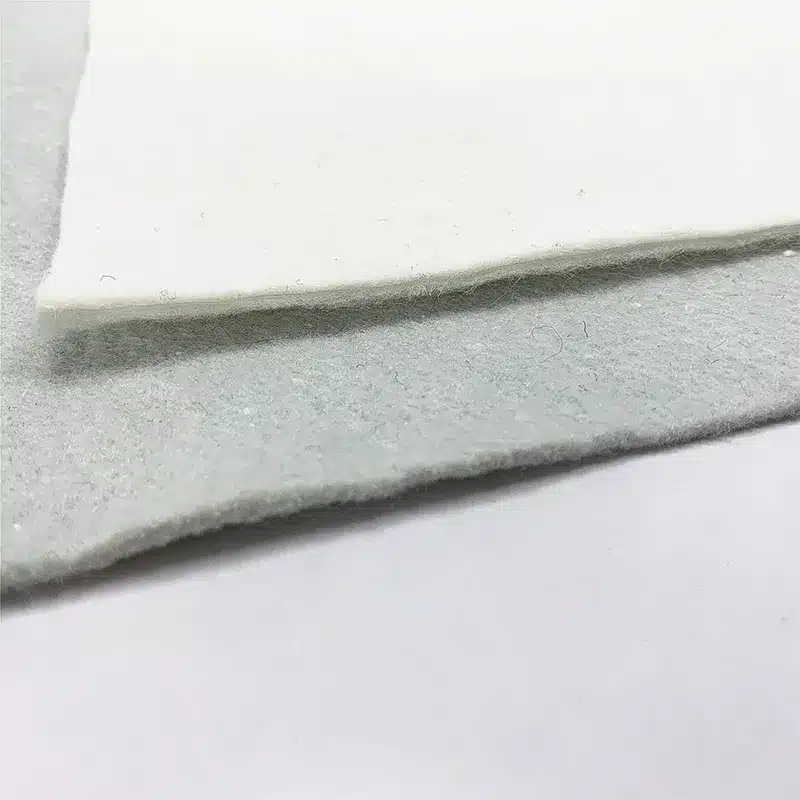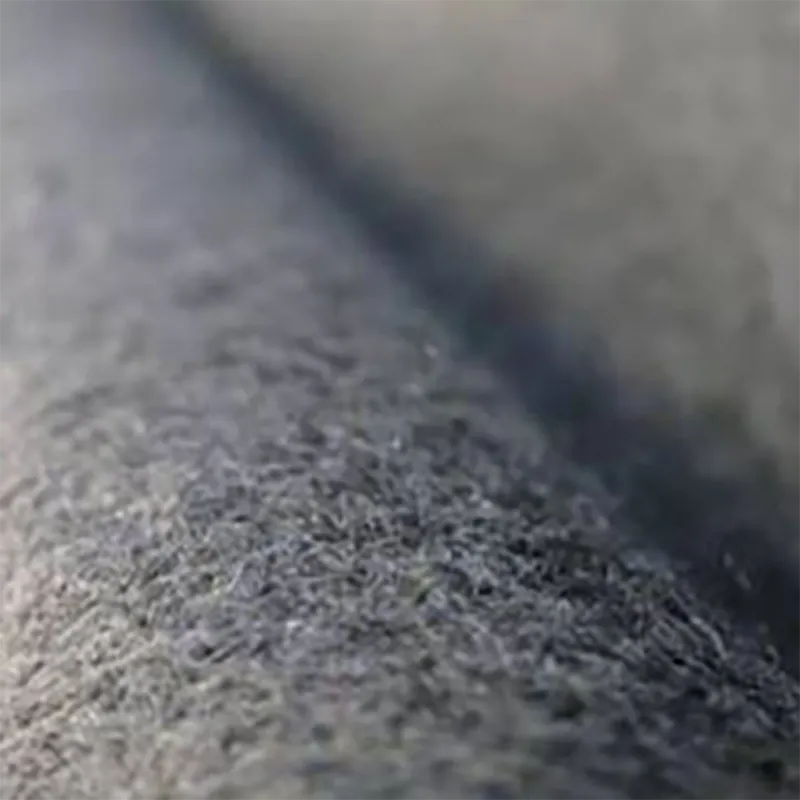+86-159 9860 6917
info@geofantex.com
geofantex@gmail.com
+86-400-8266163-44899
Erosion poses a significant threat to landscapes worldwide, especially on steep hillside terrains where soil stability is crucial. In the battle against erosion, geotextiles emerge as indispensable allies, offering innovative solutions to combat soil degradation by evenly distributing water flow and reducing surface runoff. This article delves into the intricate world of geotextiles, exploring their role in erosion control and soil stabilization.
How do geotextiles prevent erosion?
Geotextiles are specialized fabrics used in civil engineering and environmental projects to prevent soil erosion. Their mechanisms and functions can be broken down as follows:
Filtration
- Function: Geotextiles allow water to pass through while retaining soil particles.
- Mechanism: They act as a filter layer that prevents fine soil from being washed away by water flow. This helps maintain soil stability and prevents erosion.
Separation
- Function: Geotextiles separate different soil layers.
- Mechanism: They prevent the mixing of subsoil and topsoil, which helps maintain the integrity and function of each layer. This separation is crucial in applications like road construction, where the mixing of layers can weaken the structure.
Reinforcement
- Function: Geotextiles add strength to the soil.
- Mechanism: They provide tensile strength to the soil, helping to reinforce slopes and embankments. This reinforcement helps prevent the collapse of soil structures under stress.
Drainage
- Function: Geotextiles facilitate water drainage.
- Mechanism: They allow water to pass through the soil layer while preventing soil loss. Effective drainage reduces water pressure and prevents erosion due to water buildup.
Protection
- Function: Geotextiles protect soil surfaces.
- Mechanism: They act as a protective layer on soil surfaces, especially in areas exposed to heavy rainfall or water flow. This protection reduces direct impact and surface erosion.
Geotextiles play a critical role in erosion control by filtering soil particles, separating soil layers, reinforcing soil structures, facilitating drainage, and protecting soil surfaces. Their use is essential in maintaining soil stability and preventing erosion in various civil engineering and environmental projects.

What is geotextile fabric for erosion?
Geotextile fabric is a permeable textile material used in conjunction with soil, rock, or any other geotechnical engineering-related material. Its primary function is to provide erosion control by stabilizing soil and preventing soil particles from being carried away by water or wind.
Purpose of Geotextile Fabric in Erosion Control
- Soil Stabilization: Geotextile fabric helps in stabilizing the soil by holding it in place and preventing it from being washed away by rainwater or blown away by wind.
- Filtration: The fabric allows water to pass through while retaining soil particles, thus preventing erosion.
- Separation: It separates different layers of soil, preventing them from mixing and thus maintaining the structural integrity of the ground.
- Reinforcement: By adding tensile strength to the soil, it helps in maintaining the shape and position of soil structures.
Functions of Geotextile Fabric
- Drainage: It helps in channeling water through the soil, reducing waterlogging and associated erosion.
- Protection: It shields the soil from the direct impact of rain, reducing surface erosion.
- Support: It supports vegetation growth, which further stabilizes the soil.
Applications of Geotextile Fabric
- Road Construction: Used under roads to prevent the mixing of subgrade and aggregate layers.
- River and Canal Banks: Prevents erosion of banks by stabilizing the soil.
- Landfills: Provides stability and prevents the escape of contaminants.
- Slope Protection: Used on slopes to prevent landslides and soil erosion.
Types of Geotextile Fabric
- Woven Geotextiles: Made by weaving fibers together, providing high tensile strength and used in areas requiring reinforcement.
- Non-Woven Geotextiles: Made by bonding fibers together, used for filtration and separation purposes.
Geotextile fabrics are essential in erosion control, providing soil stabilization, filtration, and reinforcement. Their application in various engineering projects ensures the longevity and stability of structures and natural landscapes.
What is geotextile for soil stabilization?
Introduction to Geotextiles:
- Geotextiles are permeable fabrics which, when used in association with soil, have the ability to separate, filter, reinforce, protect, or drain.
- They are typically made from polypropylene or polyester.
Purpose of Geotextiles in Soil Stabilization:
- Separation: Geotextiles prevent the intermixing of different soil layers, which maintains the integrity of each layer and improves the overall stability of the soil structure.
- Filtration: They allow water to pass through while retaining soil particles, which is crucial for maintaining the soil’s drainage properties.
- Reinforcement: By providing tensile strength, geotextiles reinforce soil and prevent deformation, improving load distribution and bearing capacity.
- Protection: They protect against soil erosion and loss of soil particles, especially in areas prone to water flow or heavy rainfall.
Functions of Geotextiles:
- Separation: Geotextiles are used to separate layers of different materials, such as in road construction, to prevent the mixing of subgrade soil and aggregate layers.
- Filtration: Installed in drainage applications, geotextiles allow water to flow through while filtering out fine particles that might clog drainage systems.
- Reinforcement: In retaining walls or embankments, geotextiles provide additional strength and stability, reducing the risk of structural failure.
- Erosion Control: They are used in coastal and riverbank protection to prevent soil erosion caused by wave action or water flow.
Applications:
- Road Construction: Geotextiles are used to stabilize the base course and subgrade layers.
- Drainage Systems: They are integrated into drainage trenches, retaining walls, and landfills to facilitate water drainage while preventing soil migration.
- Erosion Control: Geotextiles are used in landscaping, embankments, and coastal protection to prevent soil erosion.
- Agriculture: They are utilized to improve soil conditions for crop growth and to manage water distribution.
Benefits:
- Improved Durability: Enhances the lifespan and performance of soil structures.
- Cost-Effective: Reduces maintenance costs and the need for frequent repairs.
- Environmental Protection: Minimizes soil erosion and sedimentation in water bodies.
- Enhanced Soil Performance: Increases the load-bearing capacity and stability of soil.
What is geotextile for soil stability?
Geotextiles are permeable fabrics used in civil engineering and construction projects to improve soil stability, provide erosion control, and aid in drainage. These materials are made from synthetic fibers that are either woven, knitted, or non-woven.
Functions of Geotextiles
- Separation: Geotextiles prevent the mixing of different soil layers, which is crucial in maintaining the structural integrity of construction projects such as roads and railways.
- Reinforcement: They provide additional strength to the soil by distributing loads more evenly, which helps prevent soil movement and increases stability.
- Filtration: Geotextiles allow water to pass through while retaining soil particles, thereby preventing soil erosion.
- Drainage: These fabrics facilitate the movement of water and gases within the soil, preventing waterlogging and promoting stability.
- Protection: Geotextiles protect geomembranes from punctures and damage, extending the life of the overall construction.
Applications in Soil Stability
- Road Construction: Geotextiles are used to separate subgrade and subbase materials, reducing the risk of rutting and enhancing the road’s lifespan.
- Embankments: They provide stability to embankments by reinforcing the soil and preventing slope failures.
- Retaining Walls: Geotextiles improve the structural integrity of retaining walls by allowing proper drainage and reducing lateral earth pressure.
- Erosion Control: Used in slopes and shorelines, geotextiles help prevent soil erosion by stabilizing the surface and allowing vegetation to establish.
Benefits of Using Geotextiles
- Cost-Effective: Reduces maintenance costs and extends the lifespan of construction projects.
- Environmentally Friendly: Promotes sustainable construction by reducing soil erosion and promoting vegetation growth.
- Versatile: Can be used in a variety of applications, including roadways, railways, landfills, and coastal protection.
Geotextile for soil stability encompasses a diverse range of applications aimed at fortifying the structural resilience of soil against external forces. Whether deployed in road construction, embankment reinforcement, or retaining wall systems, geotextiles serve as a reliable ally in safeguarding infrastructure from the detrimental effects of erosion and subsidence. Woven geotextiles are placed between the aggregate and the subgrade to stabilize the soil, preserve the aggregate, and reinforce the surrounding soil. By harnessing the inherent properties of geosynthetic materials, engineers can implement sustainable solutions that ensure the longevity and reliability of civil engineering projects.



Get Free Sample
We’ll respond as soon as possible(within 12 hours)






















